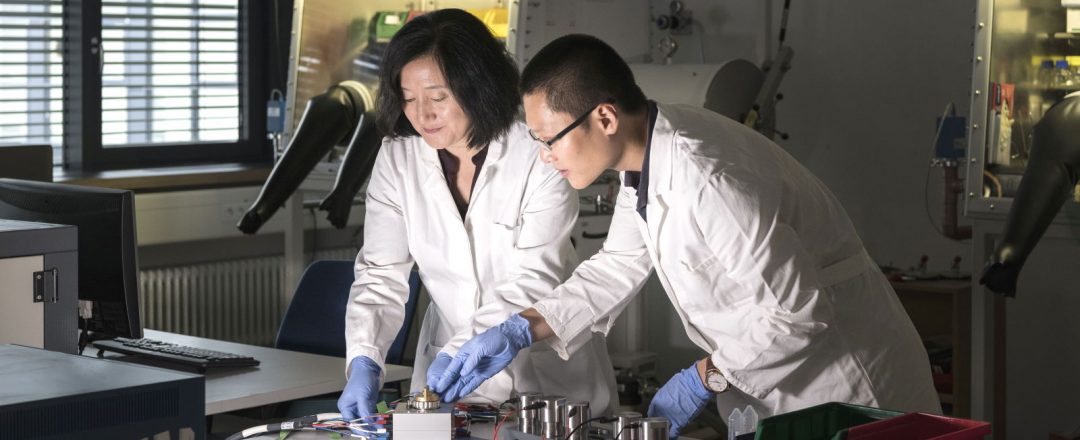Electric toothbrushes, cordless screwdrivers, and mobile phones: everywhere we look batteries are powering our lives. Admittedly, we are still at the beginning of the electrification of mobility, but the demand for such products is already enormous and increasing exponentially. Should the market for energy storage of wind and solar power develop to battery systems, we may very well face a resource problem with regards to lithium, cobalt, and nickel.
Even today, the use of these materials is heavily criticized. Cobalt is mined mainly in the Democratic Republic of Congo under harsh and at times inhumane working conditions, and in Chile, lithium production has been linked with local environmental disasters. Unfortunately, it would appear that our current battery technologies don’t fulfill the need for an ecological, fair, and low-cost energy storage that facilitates the transition to zero-emission mobility and power supply.
At the Helmholtz Institute Ulm (HIU) established by Karlsruhe Institute of Technology (KIT) in cooperation with Ulm University, researchers focus on alternative battery technologies that use metals such as calcium. Calcium is a promising candidate for developing these technologies as it is a low-cost element with wide-spread global distribution. According to Dr. Zhirong Zhao-Karger, the advantages of calcium batteries include high energy density and improved safety.
Calcium Salt Electrolyte
Still, obstacles in calcium battery development remain. In contrast to the established lithium-ion technology or more recent sodium or magnesium technologies, practicable electrolytes to produce rechargeable calcium batteries have been lacking. “The key challenge for the realization of rechargeable calcium batteries is to develop appropriate electrolytes, which have sufficient stability and are capable of reversibly calcium plating,” says Zhirong Zhao-Karger. “The calcium electrolytes reported up to date show several drawbacks, such as severe passivation on calcium anode, a relatively high operation temperature beyond 75°C and limited stability for the use of high-voltage cathode.”
In light of these challenges, Zhao-Karger’s team has now succeeded in synthesizing a new class of electrolytes based on organic calcium salts. “We have developed a practical electrolyte which can be used at room temperature and fulfills multiple requirements for calcium batteries, including good chemical compatibility with calcium metal anode and high electrochemical stability enabling the search for high-voltage cathodes for high energy calcium batteries,” explained Zhirong Zhao-Karger. “Furthermore, the electrolyte salt can be easily synthesized with relatively cheap starting materials and the preparation method is suitable for upscaling.”
This new class of calcium-based electrolyte is an important basis for transferring calcium batteries from the laboratory to real-world application. There is great potential to replace lithium technologies in electric vehicles, mobile electronic devices, and stationary storage systems, but this may take time as the research continues to develop.

















